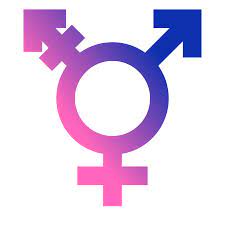Testosterone is a hormone often associated with masculinity, but it plays a significant role in the lives of all genders. For many individuals undergoing hormone therapy or simply experiencing natural fluctuations, the effects of testosterone can be quite pronounced, especially when it comes to facial appearance. In this article, we will explore what testosterone does, how it changes over time, and the specific facial transformations that can occur. Let’s dive into the fascinating world of testosterone and its impact on your face!
What is Testosterone and Why Does It Matter for Your Face?
Testosterone is a steroid hormone primarily produced in the testes and ovaries, with small amounts produced in the adrenal glands. It’s best known for its role in developing male physical characteristics, but it’s critical for everyone, influencing muscle mass, energy levels, and even mood. When it comes to facial appearance, testosterone can affect skin thickness, oil production, and the overall structure of the face. Can You Surgically Change Your VoiceSissy Outfits For Men
For individuals undergoing transition or hormone replacement therapy, the changes brought about by testosterone can be life-changing. Many people notice a shift in how they perceive themselves and how others perceive them, making understanding testosterone’s role even more essential. The face is often the first place these changes are observed, which can significantly impact self-esteem and body image.
How Testosterone Levels Change Naturally Over Time
Testosterone levels are not static; they fluctuate throughout life. In males, testosterone typically peaks during late adolescence and early adulthood, then gradually declines by about 1% each year after the age of 30. In females, testosterone levels are much lower but still play an important role in health and well-being. Changes in hormonal levels can influence not only physical characteristics but also emotional states and mental health.
For those considering hormone therapy, understanding these natural fluctuations can provide some context for the changes to come. It’s important to remember that everyone’s experience with testosterone is unique, and factors like age, genetics, and lifestyle can all play a role in how these levels fluctuate and how they affect the face.
Common Facial Changes Linked to Rising Testosterone Levels
As testosterone levels increase, several common facial changes can occur. One of the more noticeable changes is an increase in facial hair growth, particularly in areas where individuals may have previously had little or no hair. This can lead to a more traditionally masculine facial structure, impacting how one’s face is perceived and experienced.
Alongside facial hair, skin texture may also change. Increased testosterone can lead to oilier skin, which might result in more pronounced acne or a different sensitivity to skincare products. Additionally, individuals may notice a change in facial fat distribution, leading to a more angular appearance or defined jawlines. These changes can be exciting for some, bringing a newfound sense of identity, while others may need time to adjust.
Before and After: Real Stories of Testosterone Face Changes
Many individuals have documented their journeys with testosterone therapy, sharing impactful before-and-after stories. For some, the changes can be subtle yet profound, bringing a deeper sense of alignment with their identity. One person might share how their once-rounded cheeks have become more chiseled, enhancing their confidence in social situations.
Others report significant transformations, such as the development of a stronger jawline or more prominent brow ridge that aligns with their self-image. These transformations often serve as a source of pride, and many find community support through social media platforms or local groups that celebrate these changes. Hearing these stories can provide hope and reassurance for those considering or currently undergoing hormone therapy.
The Science Behind Testosterone and Facial Appearance
The relationship between testosterone and facial appearance is rooted in science. Testosterone influences the development of secondary sexual characteristics, which includes facial structure changes. It affects the body’s distribution of fat, muscle mass, and even bone density, all of which contribute to one’s overall facial appearance.
Research has shown that higher testosterone levels are associated with more pronounced male characteristics, which can manifest in the face. This includes changes in skin texture, fat distribution, and facial hair growth. Understanding the science behind these changes helps individuals know what to expect as they navigate their hormone therapy journey.
Factors That Influence Testosterone’s Effect on the Face
While testosterone plays a significant role in facial changes, it’s important to recognize that numerous factors can influence these effects. Genetics is a major player—some individuals may have a genetic predisposition for certain facial traits that will either amplify or diminish the effects of testosterone.
Additionally, lifestyle factors such as diet, exercise, and stress levels can impact testosterone levels and how they manifest in the body. For instance, regular exercise can help optimize hormone levels, potentially enhancing the benefits of therapy. Understanding these factors can empower individuals to take control of their health and appearance during their transition.
Tips for Managing Facial Changes During Hormone Therapy
Embarking on a journey with testosterone therapy can bring about significant changes, and it’s essential to have strategies to manage those facial transformations. First and foremost, establishing a solid skincare routine can help address issues like changes in oil production and acne. Incorporating products that are suitable for your skin type can make a world of difference.
Additionally, consider consulting with a dermatologist or aesthetician who is familiar with hormone-related changes. They can offer tailored advice and treatments that align with your needs. It’s also beneficial to connect with support networks, be it online or in person, where you can share experiences and tips with others who are going through similar changes.
Embracing Your New Look: Confidence After Testosterone Changes
The journey of change can be both exciting and daunting, and embracing your new look is an important step. Many individuals report feeling a surge of confidence as their physical appearance begins to align more closely with their gender identity or self-image. This newfound confidence can positively influence various aspects of life, from personal relationships to professional settings.
Self-acceptance is key. Embracing the changes, whether through a new hairstyle, makeup techniques, or by simply rocking your natural appearance, can empower you. Remember, your face is just one aspect of who you are, and it’s your unique personality and spirit that truly shine through. Celebrate your journey and the new facets of yourself that come to light with each change!
Testosterone and its effects on facial appearance are an intricate part of many people’s journeys, whether through therapy or natural changes. Understanding the science, sharing experiences, and embracing the transformations can help individuals navigate the ups and downs with confidence. Remember, every change is an opportunity to celebrate who you are becoming. Here’s to embracing the journey, one facial feature at a time!


